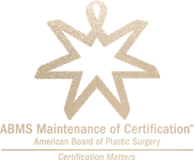















Diet and exercise are key components to achieving a slender physique, but they can leave behind stubborn pockets of fat. Body contouring procedures offer a solution to enhance the results of diet and exercise, creating a more streamlined and toned appearance. Exercise is important to maintaining plastic surgery results, but patients must give themselves time to recover before resuming their regular exercise routine.
Learn more about when exercise can resume in this general exercise timeline after plastic surgery from Chelmsford plastic surgeon Dina Eliopoulos, MD.
Exercising too soon after surgery can increase the risk of complications, which is why it is important to follow your surgeon's instructions regarding exercise. The type of surgery, along with the number of procedures performed and personal healing times, will determine the length of time needed to recover. With that said, this timeline is a general overview of what to expect and personal experiences will vary.
Patients should expect the first few days immediately following plastic surgery to be the most painful and will generally notice bruising and swelling. Pain medications are typically prescribed, and though these can help make patients comfortable, it's important to rest during the initial recovery. Strenuous activity, like weight lifting and jogging, must be avoided. Patients are generally advised to take light, short walks by the second or third day of recovery to encourage healing and blood circulation.
Many patients will begin to be more mobile around two weeks after surgery. Pain should reduce and swelling may begin to go down around this time. Depending on the surgery performed, some patients will be well enough to return to work but should still continue to avoid strenuous activity. Light walking should continue and some patients may be encouraged to take longer walks to help prepare the body for the return to normal activity in the coming weeks.
For many patients, more moderate activity may be reintroduced by the fourth week of recovery, provided they receive approval from their surgeon. At this time, it's not uncommon for light cardio, such as jogging, to be approved. Strenuous activity should be avoided until fully recovered, which can take six weeks or longer. Patients who begin to start more moderate exercise around the fourth week of recovery should slowly reintroduce exercise and be careful when exercising areas near surgical sites.
Around the sixth week of recovery, many patients will be recovered enough to increase their physical activity. Upon physician approval, weight training, moderate cardio, and some strenuous activity may be reintroduced. After six weeks, most patients will be approved and encouraged to resume their normal exercise routine.
Exercising after plastic surgery is important for maintaining results, but should be limited during the recovery process. For more information about exercising after plastic surgery, or to discuss any questions you may have about your treatment options, we invite you to schedule a consultation with Dr. Eliopoulos at the Massachusetts Center for Plastic Surgery.
Plastic surgery isn’t just about people changing their look—it's about making you feel good about being you. Whether you need breast augmentation, a breast lift, liposuction or Botox, Dr. Dina Eliopoulos is here for you. For over 20 years, patients have sought out the care and results that Dr. Eliopoulos can create in her beautiful Chelmsford, Massachusetts office. The peace of mind that comes from a board-certified, residency- and fellowship-trained plastic surgeon is hard to parallel. Schedule a consultation with Dr. Eliopoulos today to experience the difference for yourself.